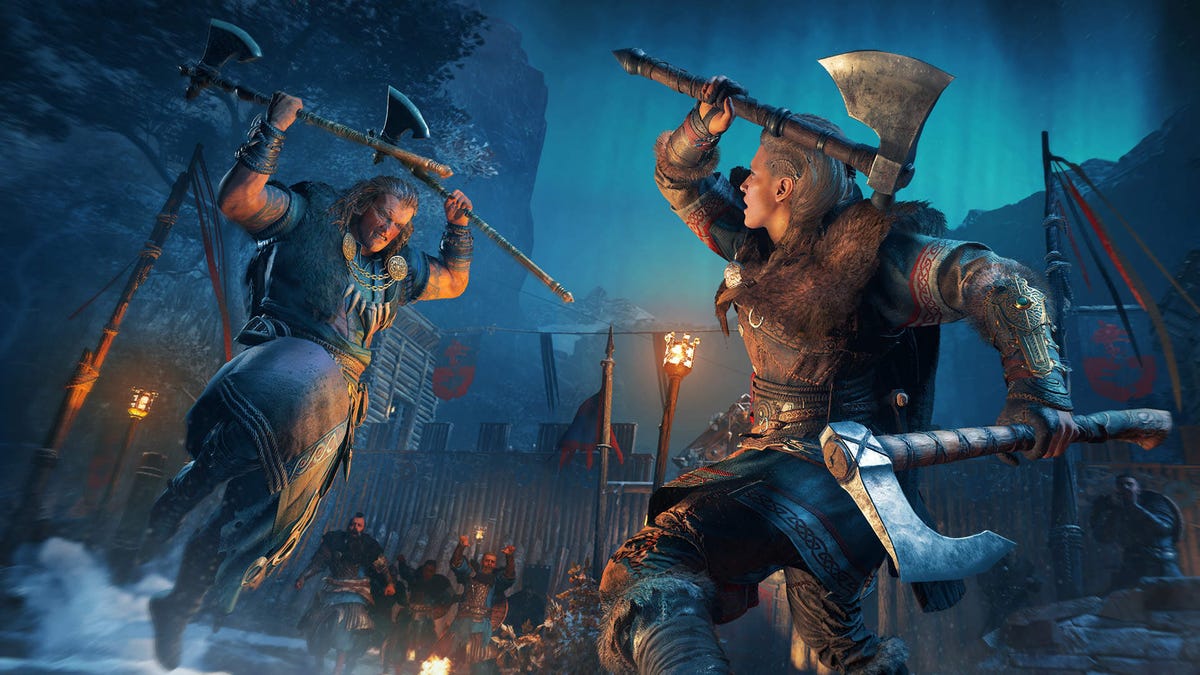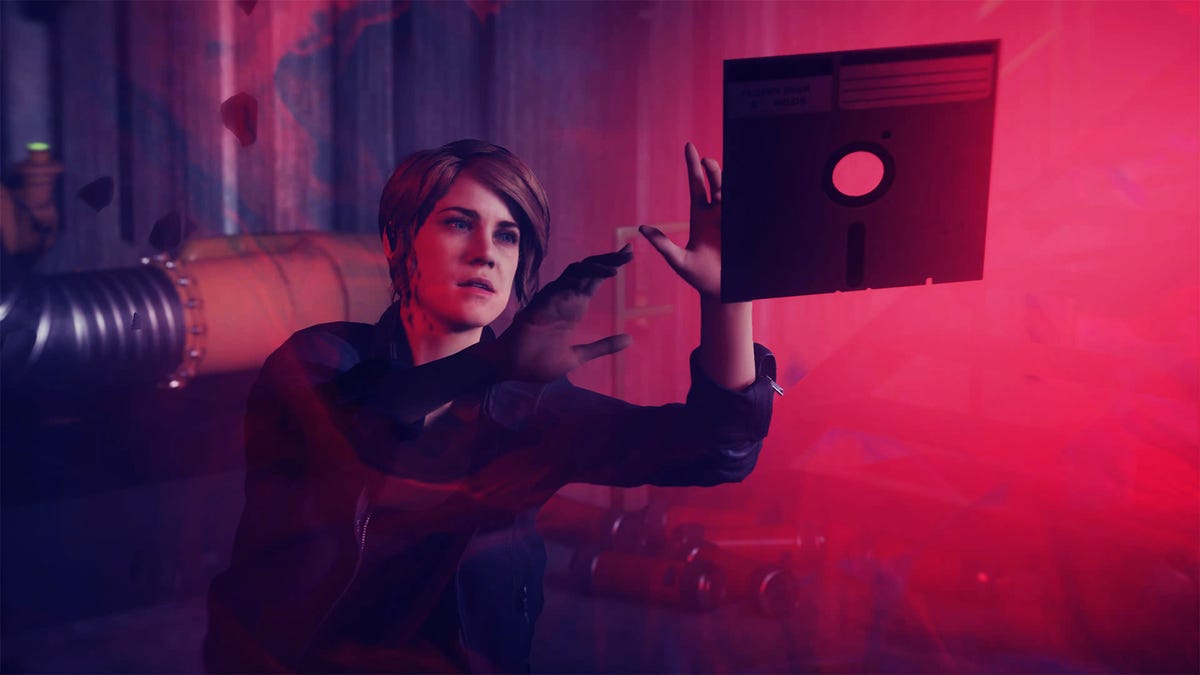It was bound to happen. And it shouldn’t be a complete surprise. The latest Studio Ghibli film, Earwig in the Witch, is a CG animated feature film. Last month, director Goro Miyazaki told Kotaku how that happened.
The Anime Dream Team Behind Chainsaw Man
Share SubtitlesOffEnglishShare this VideoFacebookTwitterEmailRedditLinkview videoThe Anime Dream Team Behind Chainsaw Man
Earwig and the Witch isn’t Studio Ghibli’s first foray into CG animation. Hayao Miyazaki, Goro’s father, released a 14-minute short for the Ghibli Museum called Boro the Caterpillar that too used computer-created art.
“But Boro the Caterpillar is not completely CG,” Goro Miyazaki told me last month through a Zoom interview. “There are lots of hand-drawn parts. It looks like hand-drawn animation. So, while it [CG] is not the first for us, it’s the first time we’ve made an animation that embodies the look of CG.” He added that this is the first time the studio has made something this long in CG.
After doing Boro the Caterpillar, the senior Miyazaki was not interested in revisiting the form. “I was able to do so CG, but it was a pain, so it wasn’t for me,” Hayao Miyazaki said in a TV interview. “But for Goro, it wasn’t like that.”
Previously, the younger Miyazaki did a TV series called Ronja, the Robber’s Daughter, working outside Ghibli. It was CG but looked closer to cell animation.
“For me, I had long thought the next time I were to do a full-length animation at Ghibli, I wanted to try CG,” he says. “I read Earwig, and I thought it was very interesting. The reason why was that it was about how a young girl, by herself, perseveres.”
The idea for the adaptation of Earwig and the Witch came about after Hayao Miyazaki came across the book, but ultimately, Goro ended up helming the picture. The finished project seems to have pleased his notoriously picky father. “The private screening was good,” Hayao Miyazaki recently said. “Everyone said they enjoyed it as well after getting back from seeing it. Simply saying it was enjoyable is a good thing.”
The idea originally to do the movie in CG came from long-time Ghibli producer Toshio Suzuki, who told the younger Miyazaki that CG animation was spreading throughout the industry, even in Japan, and thus, would be good to pursue. “Because of that advice, the movie ended up done in CG,” Goro Miyazaki told me.
When watching this debut computer graphic feature, the unmistakable Studio Ghibli touch comes through. The blues in the sky and the greens in the foliage are reminiscent of the studio’s other works. (Interestingly, Suzuki hand-drew the movie’s Japanese title during the movie’s opening sequence.) I asked Miyazaki if the studio was trying to protect its house style, even as it adopted new tech.
“We didn’t start off thinking this was something we would protect,” he replied. “When making CG animation, you draw things digitally and then can manipulate them. When we did that for the sky, it didn’t look like the kind of sky we like. So even among the same blue colors in the sky, there are these complex color changes that blur into each other. So, in order to feel the air in the sky, we felt that it would be better to use real hand-drawn art.”
To create this effect, background art was drawn on paper, then digitized and touched up with CG animation. This style is most noticeable in some of the scenery and interiors, and for me, it was the best embodiment of what CG Ghibli could be.
Earwig and the Witch took around four years to complete, with Miyazaki conceding that it took longer than traditional animation. “Compared to the hand-drawn animation I’ve done, yes, it was a long time.” Production was a mix of core Studio Ghibli members, plus freelancers and outsourcing. What does that mean for the future? As of writing, Studio Ghibli is still an overwhelmingly traditional animation studio and looks to remain that way.
“Those who apply to Studio Ghibli want to do hand-drawn animation. At this point, people who want to do CG animation are not suddenly coming to Ghibli.” But, as I pointed out, Walt Disney used to be a hand-drawn animation studio but made the leap to the computerized style. Likewise, if Studio Ghibli did the same, then Miyazaki believes, “In the future, that could lead to the creation of something new.”
It’s not a matter of one or the other. Throughout the interview, Miyazaki extolled the merits of hand-drawn animation. “The appeal of hand-drawn is that for a character, it’s the lines are drawn by hand with a pencil. Even if you try to recreate that line in CG, no matter how hard you try, at this point, nothing has been successful. So by that, I think the ultimate is that it’s drawn by people.”
However, by having artists working in both styles, it’s possible that they would develop a deeper understanding and appreciation of both traditional and CG animation.
For Miyazaki, he sees Earwig and the Witch as a bridge between Studio Ghibli’s traditional animation and CG. Even if, in the future, more CG animation is made, it will no doubt carry the studio’s sensibility.
“I don’t know what’s Ghibli-esque,” Miyazaki told me. “I really don’t. For example, if you look at the movies made by Hayao Miyazaki and Isao Takahata, what stands out and what’s expressed are different. But people watch them and say, oh, this is Ghibli. But I really don’t know why this Ghibli style emerges.”
I pointed out that even Ni no Kuni, the 2010 role-playing game on which Level-5 collaborated with Studio Ghibli, carried the animator’s unmistakable style. “Maybe that’s because of the character design or the way the setting was portrayed,” he replied. “The style was similar.”
Now that the studio has more CG know-how, I asked if in the future he thought Ghibli would once again be interested in collaborating or working on a video game in the future.
“I don’t think anyone feels that way at all,” he answered. “First of all, of course, the reason why we’re at Ghibli is that we want to make animation. Just because you’ve made a movie that doesn’t mean you want to make a video game. Anyone who wants to make a game, it’d a good idea for them to do that elsewhere.”
So once again, I repeated, there’s no interest in collaborating on a game like with Ni no Kuni in future?
“That’s correct,” he answered. “I don’t feel that way.”

